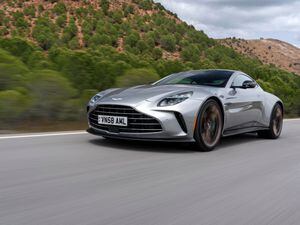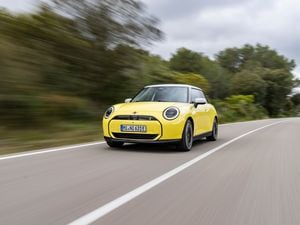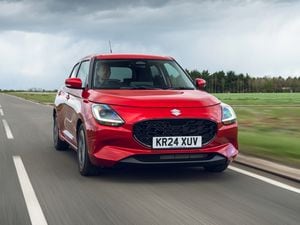UK Drive: The Jaguar F-Type Four-Cylinder Convertible proves compact engines can find a home in sports cars
The Jaguar F-Type Four-Cylinder has been designed offer sports car thrills with lower running costs. Jack Evans finds out what that’s like

What is it?
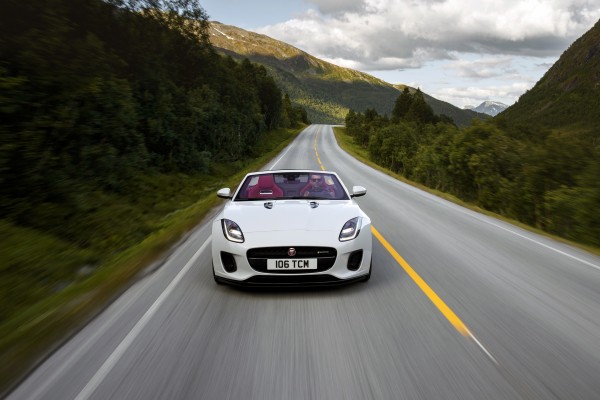
Here’s a Jaguar F-Type – but not quite as you’d know it. Rather than a raucous V8 or V6 under the long, sculpted bonnet, there’s a 2.0-litre four-cylinder petrol. While that may not sound like enough engine for a red-blooded convertible, Jaguar claims that it’s got what it takes to instil the F-Type with proper performance.
This is the convertible version too, meaning drop-top thrills and wind-in-your-hair experiences with slightly better economy figures than you’d find with the more high-powered F-Type models. There’s still a lot of kit fitted as standard, though this model has a range of options – but we’ll delve into these a little later.
What’s new?
As we’ve already highlighted, the biggest change here is the engine. However, this latest-generation F-Type does benefit from a variety of tweaks and updates. LED headlights now feature all round, while the infotainment system uses the latest Jaguar set-up. The bumpers have also been redesigned to give the F-Type a more dynamic look, while standard lightweight 18-inch alloy wheels are said to help ‘reduce unsprung mass’ – though our test car came with larger, optional 19-inch five-spoke versions.
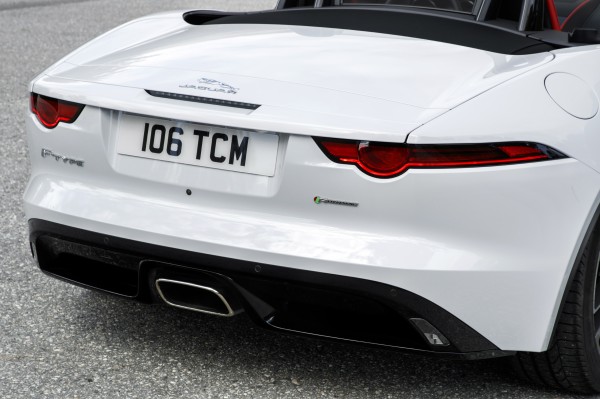
Inside, a range of aluminium finishers have been used to help lift the F-Type’s cabin – and this is needed, as it can sometimes feel like a particularly dark cockpit.
What’s under the bonnet?
The F-Type’s 2.0-litre, four-cylinder ‘Ingenium’ petrol engine is surprisingly powerful and, according to Jaguar, offers the ‘highest specific power output of any engine in the F-Type range’ with 148bhp-per-litre. Overall, it produces 296bhp and 400Nm of torque, sending this power to the rear wheels via an eight-speed ZF automatic gearbox. Acceleration takes a claimed 5.4 seconds, while the F-Type’s top speed sits at a respectable 155mph.
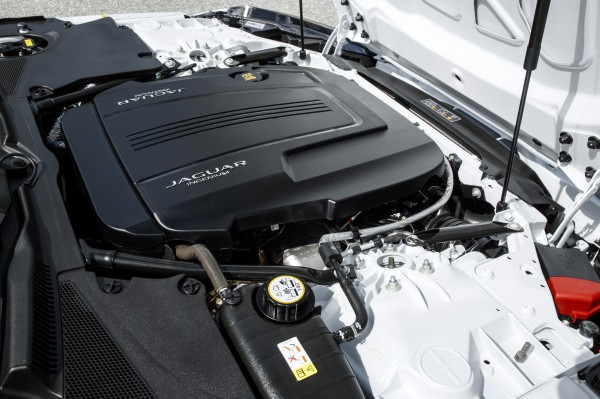
Of course, one of the main premises behind fitting a smaller capacity engine is better economy, and in that sense the four-cylinder delivers. Jaguar claims that it’ll return 39.2mpg on the combined cycle, while emitting just 163g/km CO2. For context, a Golf GTI produces 139g/km CO2 – despite being far lighter than the Jaguar.
What’s it like to drive?
Another by-product of fitting a four-cylinder engine in the place of a much larger V6 or V8 is a substantial reduction in weight. Jaguar says that the F-Type four-cylinder has shed 52kg compared to the base V6, and this makes the driving experience substantially different. In addition, Jaguar engineers have uniquely calibrated the steering and chassis to better exploit that lower overall weight.
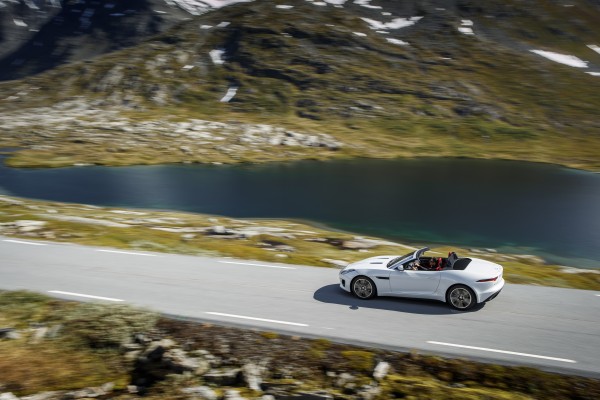
What does this mean though? Well, the F-Type four-cylinder turns just a little sharper than the regular car, while the front end feels noticeably lighter. This makes it more agile overall, and feels just a little less unwieldly than the larger-engined cars.
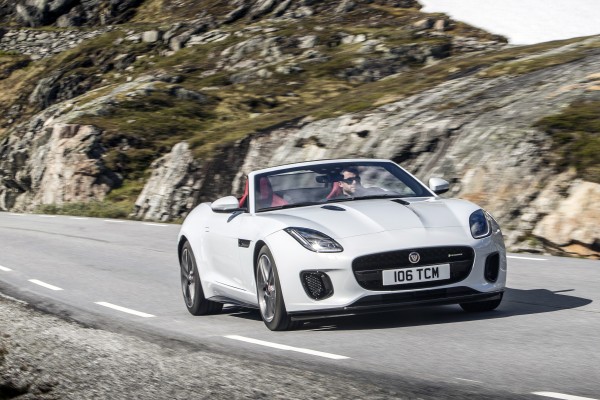
Performance is more than adequate for a sports car of this nature, while the note the engine produces may not be conventional, but to our ears it sounds interesting enough.
How does it look?
The F-Type has always been an impressively pretty design, with styling cues harking back to past Jaguar models.
Though somewhat updated for 2018, the four-cylinder is just as good to look at, with cuts and grooves in all the right places. Though the design has been in the public eye since 2011, it’s still fresh and turns heads wherever you go.
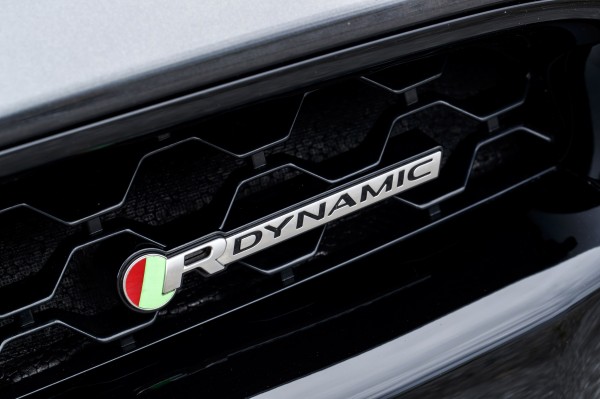
The four-cylinder car is fitted with a single central outlet exhaust, rather than the V6’s dual central outlet or the V8’s quad tail pipes. It actually suits the design of the car well, and doesn’t spoil the rear of the F-Type whatsoever.
What’s it like inside?
The Jaguar F-Type’s interior has always been a mix of the high- and low-end materials, and the four-cylinder is just the same. There are some harsher plastics to be found in some areas, though the overall effect is good. The new aluminium trim pieces do help to lift the overall look of the cabin, as the black leather of our test car, when combined with the dark folding roof, do work to create quite a dark cabin.
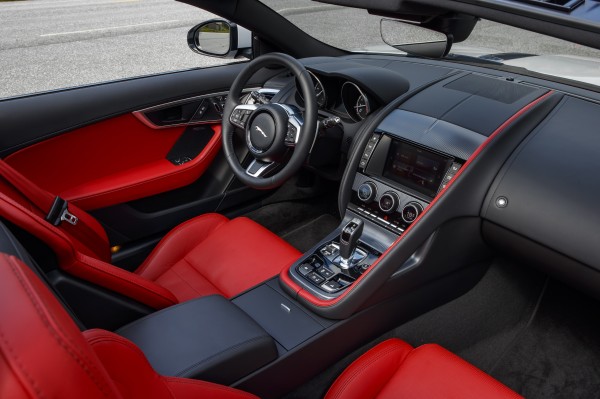
The driver’s seat has plenty of adjustment, and the same can be said for the steering wheel – meaning it’s not hard to get into a spot-on driving position. Those seats are hugely comfortable too, and provide plenty of lateral support. Our test car’s seats were also heated – a welcome feature in our chilly late January test period.
What’s the spec like?
Our test car was dressed in R-Dynamic spec, and these cars start at £59,085. However, it is accompanied by a lot of standard equipment, including full LED headlights, six-way electrically adjustable seats and a switchable active sports exhaust – the latter transforming the character of the engine.
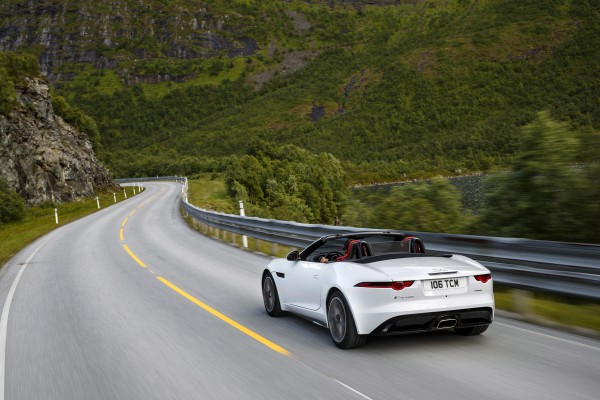
You also get automatic rain sensing wipers, and an eight-inch colour touchscreen. The infotainment system operates well enough, though the icons look a little outdated and could benefit from an update – the touchscreen is accurate and responsive, however.
Our test car came in at a hefty £67,320, with that price is the result of the inclusion of 19-inch alloy wheels, red brake callipers and larger front and rear brakes – a £2,290 option.
Verdict
The F-Type four-cylinder makes a lot of sense on many levels. It’s cheaper to run than other cars in the range, and therefore eliminates a certain amount of worry about fuel costs. It’s also sharp to drive and – to us at least – sounds special enough. Yes, the engine may not have the level of drama that comes with the larger-capacity units in the range, but it’s still a very impressive package – and one that most enthusiastic drivers would be pleased to get behind the wheel of. It’s a real showcase of how downsizing doesn’t have to mean diminished levels of fun.
Facts at a glance
Model: Jaguar F-Type Convertible Four-Cylinder
Price: £67,320
Engine: 2.0-litre turbocharged four-cylinder
Power: 296bhp
Torque: 400Nm
Max speed: 155mph
0-60mph: 5.4 seconds
MPG: 39.2 (combined)
Emissions: 163g/km CO2

